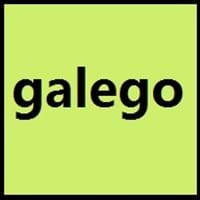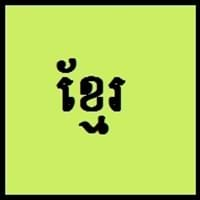Galician and Khmer
Countries
Galicia
Cambodia
National Language
Galicia
Cambodia, Thailand, Vietnam
Second Language
Not spoken in any of the countries
Not spoken in any of the countries
Speaking Continents
Europe
Asia
Minority Language
Not spoken in any of the countries
Australia, France, United States of America
Regulated By
Royal Galician Academy (Real Academia Galega)
Not Available
Interesting Facts
- In Galician language, there are no compound tenses.
- The earliest document in Galician language was written in 1228 which was legal charter for a municipality of Galicia.
- Khmer is not the tonal language.
- Khmer language has borrowed philisophical, administrative and technical vocabulary from Sanskrit and Pali.
Similar To
Portuguese Language
Lao Language
Derived From
Latin
Pali and Sanskrit Languages
Alphabets in
Galician-Alphabets.jpg#200
Khmer-Alphabets.jpg#200
Writing Direction
Left-To-Right, Horizontal
Left-To-Right, Horizontal
Language Levels
Not Available
Time Taken to Learn
Not Available
Thank You
Grazas
សូមអរគុណអ្នក (saum arkoun anak)
How Are You?
Que tal estás?
អ្នកសុខសប្បាយទេ
Good Night
Boas noites
ND
Good Evening
Boa tarde
ND
Good Afternoon
Boa tarde
ND
Dialect 1
Eastern Galician
Northern Khmer
Where They Speak
East Galicia
Australia, Cambodia, France, Thailand, United States of America
How Many People Speak
Not Available
Dialect 2
Central Galician
Khmer Krom
Where They Speak
Central Galicia
Vietnam
How Many People Speak
Not Available
Dialect 3
Western Galician
Western Khmer
Where They Speak
West Galicia
Cambodia, Thailand
Speaking Population
Not Available
Native Name
Galego
ភាសាខ្មែរ (bhāsā khmɛ̄r)
Alternative Names
Galego, Gallego
Cambodian, Khmer
French Name
galicien
khmer central
German Name
Galicisch
Kambodschanisch
Pronunciation
[ɡaˈleɣo]
[pʰiːəsaː kʰmaːe]
Ethnicity
Not Available
Khmer, Northern Khmer
Language Family
Indo-European Family
Austroasiatic Family
Subgroup
Not Available
Not Available
Branch
Not Available
Not Available
Early Forms
Medieval Galician
Proto-Khmer
Standard Forms
Galician
Modern Khmer
Signed Forms
Not Available
Not Available
Scope
Individual
Individual
ISO 639 6
Not Available
Not Available
Glottocode
gali1258
khme1253
Linguasphere
51-AAA-ab
Not Available
Language Type
Living
Living
Language Linguistic Typology
Not Available
Subject-Verb-Object
Language Morphological Typology
Not Available
Analytic, Isolating
All Galician and Khmer Dialects
Most languages have dialects where each dialect differ from other dialect with respect to grammar and vocabulary. Here you will get to know all Galician and Khmer dialects. Various dialects of Galician and Khmer language differ in their pronunciations and words. Dialects of Galician are spoken in different Galician Speaking Countries whereas Khmer Dialects are spoken in different Khmer speaking countries. Also the number of people speaking Galician vs Khmer Dialects varies from few thousands to many millions. Some of the Galician dialects include: Eastern Galician, Central Galician. Khmer dialects include: Northern Khmer , Khmer Krom. Also learn about dialects in South American Languages and North American Languages.
Galician and Khmer Speaking population
Galician and Khmer speaking population is one of the factors based on which Galician and Khmer languages can be compared. The total count of Galician and Khmer Speaking population in percentage is also given. The percentage of people speaking Galician language is Not Available whereas the percentage of people speaking Khmer language is 0.24 %. When we compare the speaking population of any two languages we get to know which of two languages is more popular. Find more details about how many people speak Galician and Khmer on Galician vs Khmer where you will get native speakers, speaking population in percentage and native names.
Galician and Khmer Language Codes
Galician and Khmer language codes are used in those applications where using language names are tedious. Galician and Khmer Language Codes include all the international language codes, glottocodes and linguasphere.





